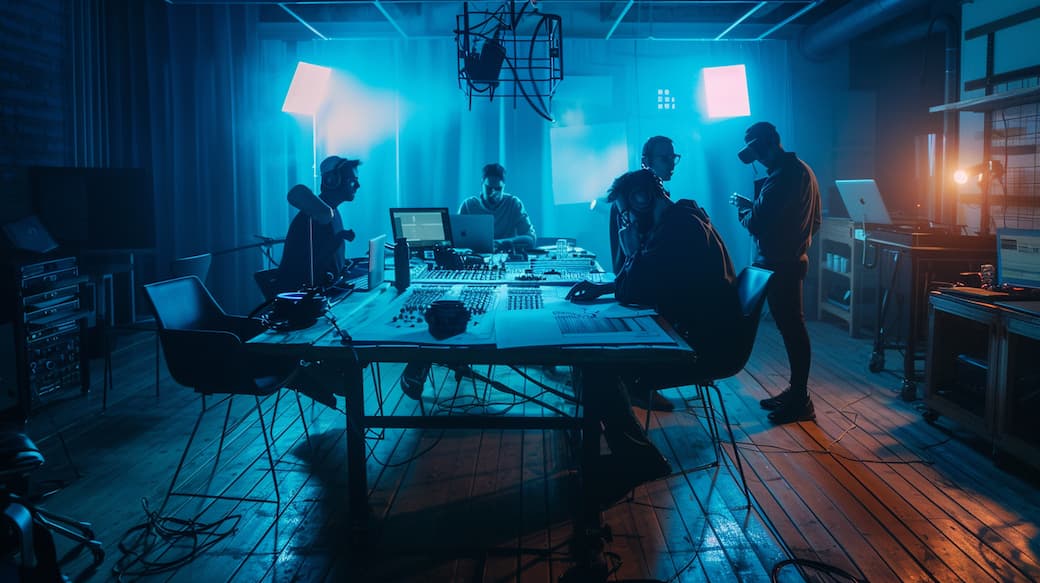
360 Production Sound – Creative Thoughts planning VR Audio
Content
The video “Audio Production for YouTube VR with Martin Rieger” and Tall Guy Films is a comprehensive guide on 360 audio, voice, and music production for virtual reality, particularly focusing on YouTube VR. Here’s a summarized outline of what was discussed in the video.
Most of these thoughts also apply to the world of video and spatial computing, which Apple offers with spatial video on the Apple Vision Pro and binaural sound.
Watch my interview with “Tall Guy Films” about the planning and production of 360 sound on YouTube.
Introduction to 360 Audio Production for VR
Welcome to the captivating world of 360 production sound, a fundamental technology pillar in the creation and playback of immersive virtual reality (VR) experiences. In this guide, we embark on a voyage of discovery, unraveling the complexities of 360 audio within the enchanting realm of VR.
Our primary mission is to educate and captivate, adhering to a style that is both informative and engaging, in line with your brand’s unique character.
In this segment, we will set the stage for our exploration into the physical world of 360 audio production, where we will delve into the intricacies of crafting immersive soundscapes that immerse audiences in the world of VR. We aim to strike a balance between providing valuable insights and ensuring that our narrative remains a source of both knowledge and entertainment.
Planning and Pre-Production in VR Audio Production
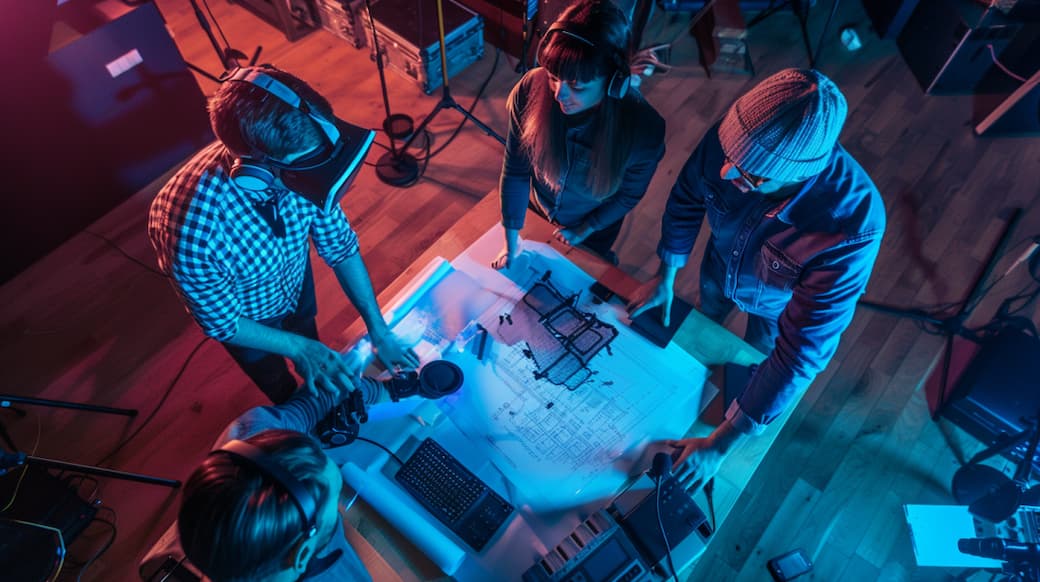
When delving into the world of VR audio production, meticulous planning and well-thought-out pre-production are the cornerstones of success. I’m a seasoned expert in spatial audio and suggest, the unique nature of 360-degree audio recording presents distinct challenges and opportunities.
Planning: Crafting the immersive audio
Before setting foot on the recording studio or location, the planning phase takes center stage. Just like crafting a compelling narrative in traditional filmmaking, for example in spatial video production, the script for the sonic narrative is meticulously designed.
This script involves not only the voice dialogue but also the entire spatial audio soundscape, including ambient sounds, effects, and their spatial choreography within the 360-degree canvas.
A crucial consideration in planning is where to hide the microphones and sound operators. In the realm of 360-degree recording, traditional studio hiding spots are often limited. When recording in open fields, concealment becomes a challenge.
Production teams often place the camera and microphones in the middle of the action and then retreat to a distance, relying on long-distance radio mics and headphones to capture the audio. The challenge lies in monitoring and controlling the recording remotely.
Pre-Production: Setting the Stage for Sonic Brilliance
Pre-production plays a pivotal role in ensuring the success of immersive audio production. It involves a multitude of behind-the-scenes decisions and preparations, each aimed at creating immersive spatial soundscapes. I must emphasizes the importance of recording separately at various locations when working on 360-degree productions.
Since the camera’s position is central, traditional boom microphones are often unusable, as they would appear in the frame. Instead, a combination of different mics and recorders is employed to capture pristine spatial audio.
Flexibility is key in pre-production, as the production team needs to adapt to different sounds and diverse scenarios. Whether it’s capturing the sounds of an open field, a bustling factory, or a serene forest, each location demands a tailored approach that captures sound well.
This might involve using headsets ear up for noise reduction, positioning microphones close to the action, or even venturing outside the studio to record essential ambient sounds that will later enhance the realism of the VR experience.
On-Set Challenges and Techniques to record binaural sound
Recording Techniques for 360 audio:
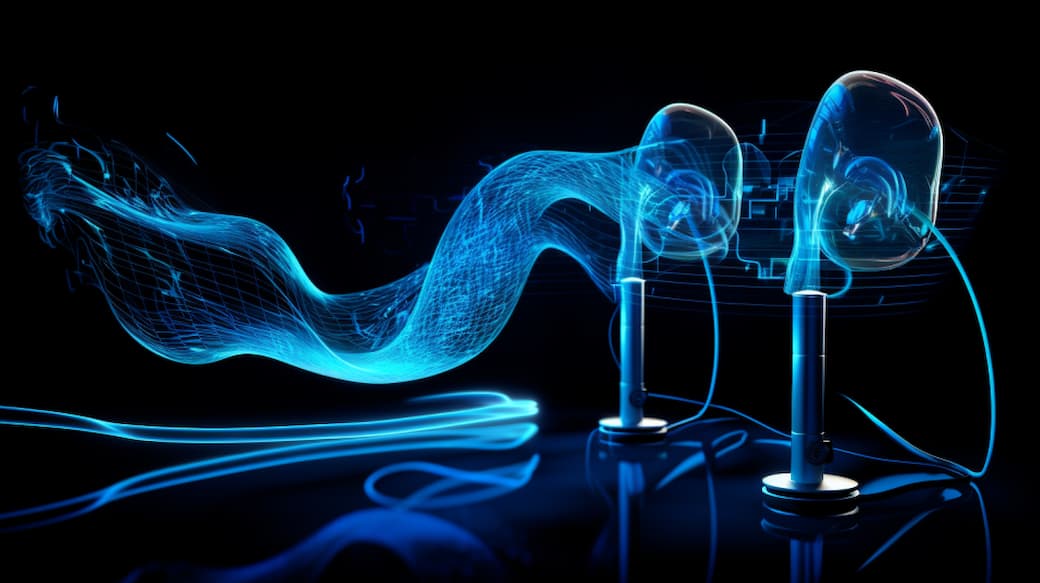
Recording audio for 360-degree video productions presents unique challenges and opportunities. To capture immersive audio that aligns with the visual experience, you’ll need a combination of recording techniques. One essential method is Ambisonics, which records sound in a spherical pattern, capturing audio from all directions.
Ambisonic microphones, such as the popular Zoom H3-VR or Sennheiser AMBEO, are designed for this purpose. They provide four or more channels of audio, ensuring that you capture the entire sound field.
In addition to Ambisonics, multiple mono speakers or stereo microphones can be used strategically to create and focus on specific sound sources within the scene. These spatial sound sources can include dialogue, music, or specific sound effects.
By recording various mono and stereo sources, you gain more control in post-production to precisely place and adjust these sounds within the 360-degree space.
Equipment Discussion: Insights into the types of microphones and recorders used in VR audio production:
In the world of VR audio production, the choice of equipment and microphone plays a critical role in achieving high-quality results. As mentioned earlier, Ambisonic microphones like the Zoom H3-VR and Sennheiser AMBEO are popular choices for capturing the immersive sound field. These microphones are designed to provide the necessary channels for spherical stereo audio recording.
However, depending on your project’s needs, you might also employ traditional microphones, including shotgun or lavalier microphones. These can be used for capturing specific sound sources or for scenarios where traditional mono or stereo microphone recordings are required. It’s essential to select the right microphones based on the scene’s complexity and the desired audio outcome.
Regarding recorders and headphones, having a portable recorder with support for multiple channels is essential for VR audio production. Brands like Zoom and Sound Devices offer recorders and headphones that can handle Ambisonic and traditional audio recording simultaneously.
This flexibility ensures that you can capture all necessary sound elements during production, enabling greater control in post-production.
Strategies for dealing with common on-set challenges in binaural audio
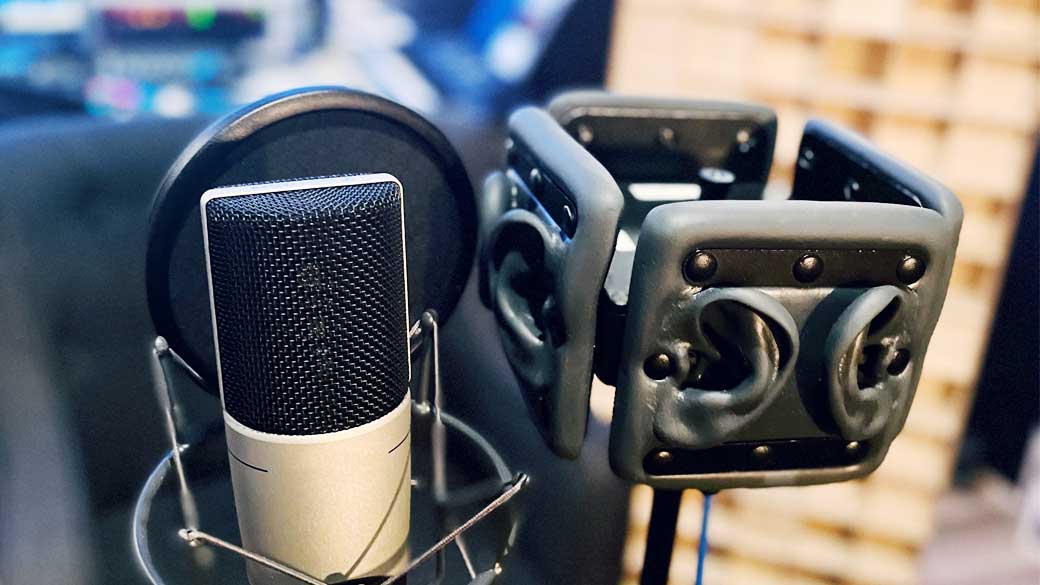
Recording audio in outdoor or challenging environments can introduce various issues, such as wind noise and equipment interference. When working in 360-degree productions, these challenges can become more pronounced. Here are some strategies to address these issues:
Wind Noise: Wind noise can be a significant problem, especially in outdoor settings. To mitigate this, use windshields or blimps on your microphones. These protective coverings help reduce wind interference and maintain audio clarity. Additionally, consider monitoring wind conditions and planning shoots during calmer weather when possible.
Equipment Interference: In a 360-degree production, it’s crucial to hide microphones and recorders effectively while avoiding interference. Use long-distance radio microphones to maintain audio quality even when you’re far from the recording source. Be creative in finding hiding spots, such as behind foliage or objects that don’t obstruct sound transmission.
Monitoring: Always have a way to monitor audio during the shoot. Camera operators often use iPads or other devices to check what’s happening in the 360-degree space. This allows for real-time adjustments and ensures you capture the best audio possible.
Backup Recordings: Consider recording backup audio in case of unexpected issues. Having redundant audio sources can save your production in post if there are problems with the primary recordings.
Post-Production and Advanced Topics
Post-Production Process in digital audio workstations
Post-production is where the magic of VR audio truly comes to life. Let’s not talk too much about plug ins and nerdy stuff here but focus on the creative aspects. Spatial audio encompasses not only dialogue but the entire soundscape, including ambient sounds and effects.
The goal of virtual reality audio here is to create a coherent and captivating sonic narrative that envelops the audience. VR audio editors carefully review recorded content, ensuring spatial accuracy and continuity within the 360-degree canvas.
Unique challenge lies in creating a sonic experience that immerses the audience in a three-dimensional world. Spatial sound engineers manipulate audio sources, adjusting object based on their spatial coordinates within the 360-degree sphere.
The objective is to transport listeners into the heart of the virtual environment, with sounds originating from multiple speakers in all directions. I must emphasize the importance of maintaining a delicate balance between spatial accuracy and artistic creativity during this process.
Seamless integration is the linchpin of successful VR audio production. The spatial audio must seamlessly align with spatial sound and the visual elements, enhancing the immersive experience. I suggest techniques such as matching up spatial audio cues with visual cues, ensuring that the audience’s senses are in perfect harmony.
Advanced Recording Techniques: The Power of an Ambisonic Mic
Advanced recording techniques are at the forefront of VR audio production, with ambisonics leading the way. Ambisonics is more than just a recording format; it’s a gateway to unparalleled flexibility in post-production.
I would highlight the versatility of ambisonics technology, for example, allowing sound engineers to rotate sound in three dimensions, a feature not readily available in other object based spatial audio formats like Dolby Atmos. Both maintain support a flexible speaker configuration for the listener.
Ambisonics offers sound engineers the ability to shape and mold audio in post-production. Post-processing tools can be applied to enhance the captured audio, including denoising, equalization, and even beamforming to laser-focus on specific sounds.
However, I’m a cautious user against overcomplicating the process, emphasizing that focusing on the right microphone setup during recording is often more critical than extensive post-processing.
Spatial Audio Scapes in the age of Spatial Computing
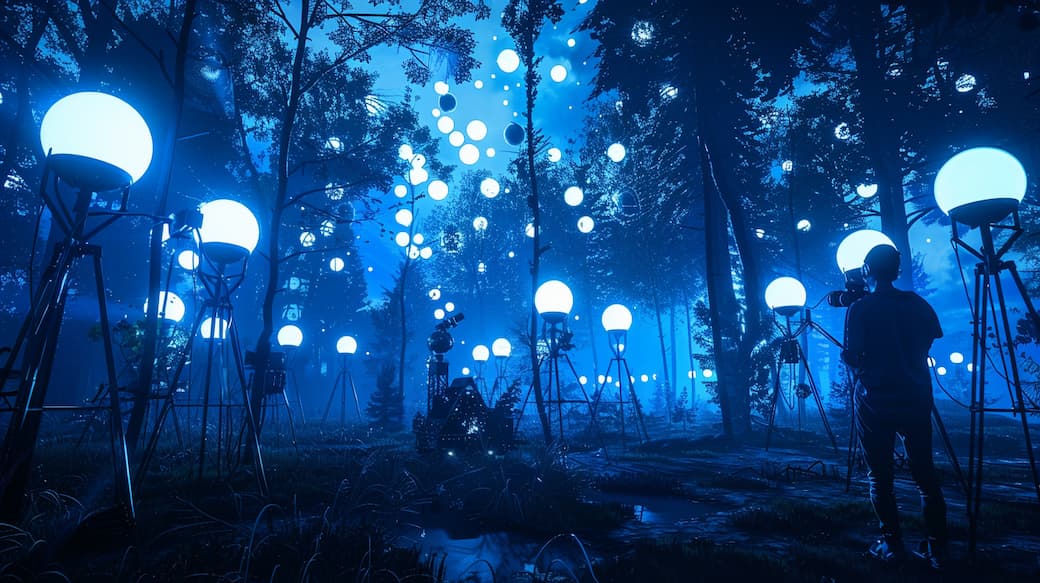
The future of VR audio production promises exciting possibilities for users. With evolving technologies, we can expect to create even more immersive audio experiences, enhanced spatial accuracy, and creative storytelling opportunities.
As VR adoption grows, so does the demand for cutting-edge, interactive audio experiences. The boundaries of what is possible in VR audio are continually expanding.
In closing, our journey through VR audio production has taken us through the realms of planning, pre-production of digital audio workstations, and post-production in digital audio workstations. We’ve uncovered the nuances of crafting immersive sonic narratives and explored advanced techniques like ambisonics.
As we gaze into the future, one thing is certain: the world of VR audio and music production, is a dynamic and ever-evolving landscape, where innovation knows no bounds.
Get in touch now